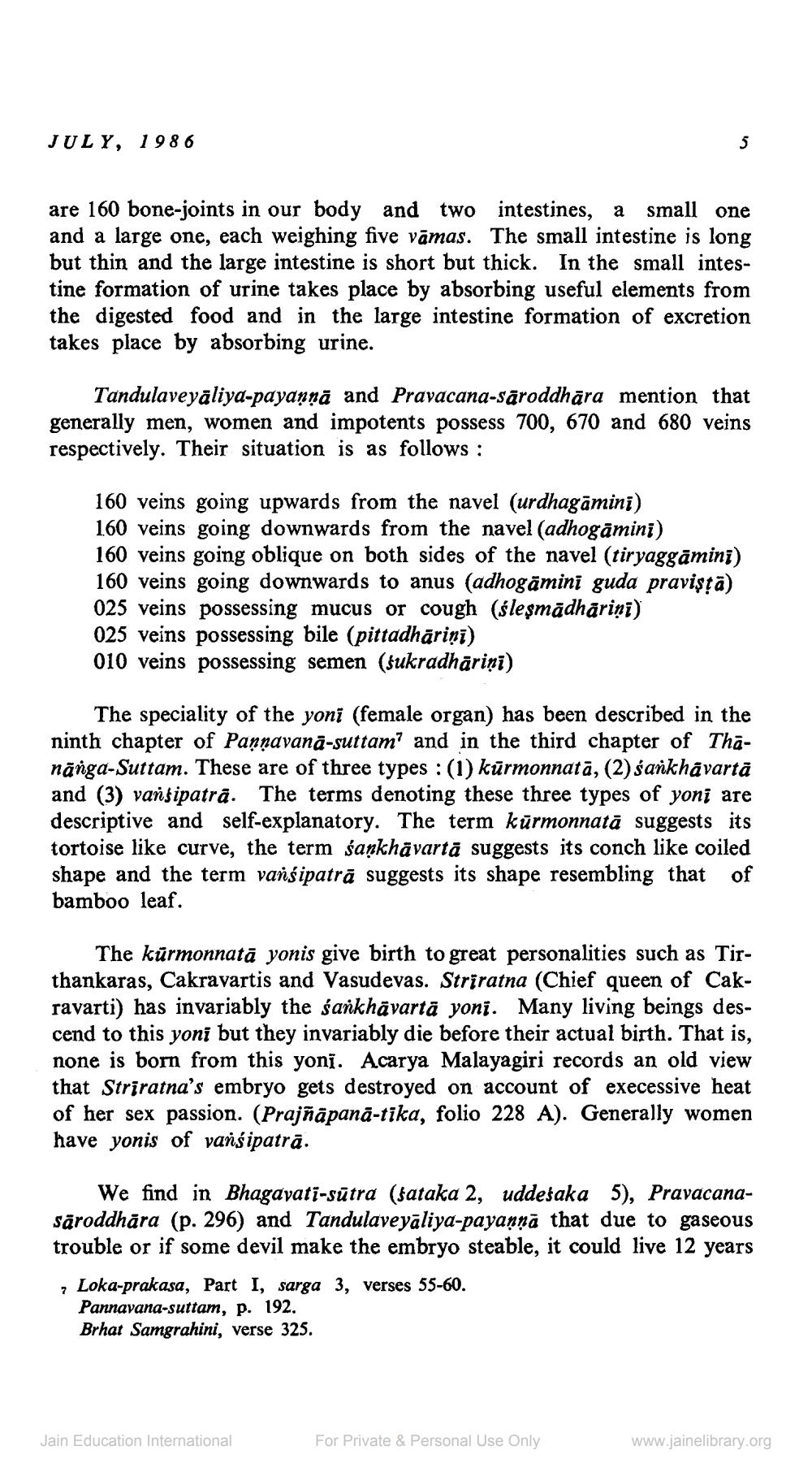Book Title: Jain Journal 1986 07 Author(s): Jain Bhawan Publication Publisher: Jain Bhawan Publication View full book textPage 7
________________ JULY, 1986 are 160 bone-joints in our body and two intestines, a small one and a large one, each weighing five vāmas. The small intestine is long but thin and the large intestine is short but thick. In the small intestine formation of urine takes place by absorbing useful elements from the digested food and in the large intestine formation of excretion takes place by absorbing urine. Tandulaveyaliya-payanna and Pravacana-säroddhāra mention that generally men, women and impotents possess 700, 670 and 680 veins respectively. Their situation is as follows: 160 veins going upwards from the navel (urdhagāmini) 160 veins going downwards from the navel (adhogāmini) 160 veins going oblique on both sides of the navel (tiryaggāmini) 160 veins going downwards to anus (adhogāmini guda praviştā) 025 veins possessing mucus or cough (ślesmādharini) 025 veins possessing bile (pittadhārini) 010 veins possessing semen (sukradhāriņi) The speciality of the yoni (female organ) has been described in the ninth chapter of Pannavanā-suttam? and in the third chapter of Thanānga-Suttam. These are of three types : (1) kūrmonnatā, (2) sankhåvartā and (3) vansipatra. The terms denoting these three types of yoni are descriptive and self-explanatory. The term kūrmonnatā suggests its tortoise like curve, the term saņkhāvartā suggests its conch like coiled shape and the term vansipatrā suggests its shape resembling that of bamboo leaf. The kūrmonnat, yonis give birth to great personalities such as Tirthankaras, Cakravartis and Vasudevas. Striratna (Chief queen of Cakravarti) has invariably the sankhāvarta yoni. Many living beings descend to this yoni but they invariably die before their actual birth. That is, none is born from this yoni. Acarya Malayagiri records an old view that Striratna's embryo gets destroyed on account of execessive heat of her sex passion. (Prajñāpanā-tika, folio 228 A). Generally women have yonis of vansipatrā. We find in Bhagavati-sūtra (sataka 2, uddesaka 5), Pravacanasäroddhāra (p. 296) and Tandulaveyāliya-payannā that due to gaseous trouble or if some devil make the embryo steable, it could live 12 years , Loka-prakasa, Part I, sarga 3, verses 55-60. Pannavana-suttam, p. 192. Brhat Samgrahini, verse 325. Jain Education International For Private & Personal Use Only www.jainelibrary.orgPage Navigation
1 ... 5 6 7 8 9 10 11 12 13 14 15 16 17 18 19 20 21 22 23 24 25 26 27 28 29 30 31 32 33 34
